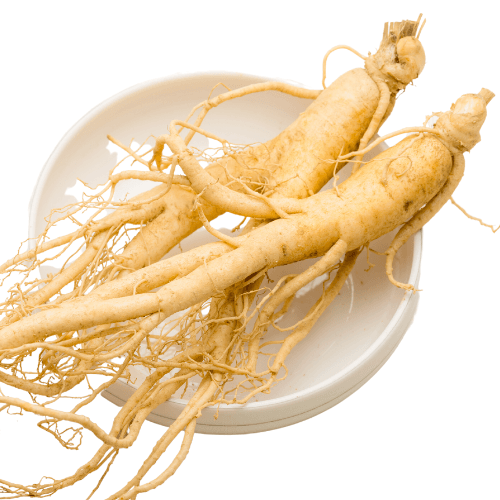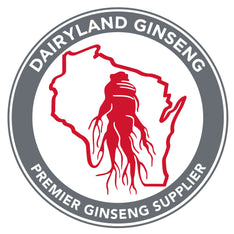
Discover the Benefits of Planting Wisconsin Ginseng Rootlets
The world of ginseng cultivation is fascinating, and those in the know often seek out specific varieties for their desired properties. Wisconsin ginseng rootlets, particularly, have garnered a lot of attention. But what are they exactly, and why are they so sought after? In this blog post, you'll learn about the characteristics of these prized rootlets. We'll cover how to plant and cultivate them, and why they’re highly sought-after by cultivators across the nation. We'll also address some of the legalities surrounding growing ginseng, particularly in Wisconsin, to help you get started on your ginseng journey the right way.
Table of Contents:
- Understanding Wisconsin Ginseng Rootlets
- Planting Wisconsin Ginseng Rootlets
- FAQs about Wisconsin Ginseng Rootlets
- Conclusion
Understanding Wisconsin Ginseng Rootlets
Wisconsin ginseng rootlets are essentially young ginseng plants, usually between two to three years old. They come from ginseng seeds produced by mature ginseng plants and have developed their own root system. These rootlets are highly sought after because they provide a head start for those wanting to grow their own ginseng.
Unlike starting from seed, which can take several years, using rootlets allows you to shorten the overall growing period potentially. Wisconsin ginseng rootlets offer more than just a quick start, though.
The Appeal of Wisconsin Ginseng
Wisconsin is known for producing some of the finest American ginseng (_Panax quinquefolius_). The state's unique climate, with its cold winters, warm summers, and fertile soil, create ideal conditions for ginseng to thrive.
Wisconsin ginseng is often lauded for its superior quality and higher concentration of ginsenosides. Ginsenosides are believed to be responsible for ginseng’s health benefits. Naturally, growers nationwide look to Wisconsin ginseng, and its rootlets, as a great starting point for their ginseng gardens. You might wonder, though, what sets these rootlets apart from simply starting from seeds.
Rootlets vs. Seeds: A Head Start
While you can start growing ginseng from seed, using Wisconsin ginseng rootlets provides a head start. Seeds require a stratification period to break their dormancy, simulating winter conditions.
Even then, ginseng seeds have a lower germination rate than rootlets and are susceptible to damage from pests and diseases. Rootlets, on the other hand, have already gone through these initial hurdles. They're sturdier and more likely to survive and thrive when transplanted. So, for folks wanting a smoother entry point into growing ginseng, using these rootlets from the "Ginseng State" is often a preferred choice. However, the price of Wisconsin ginseng can fluctuate due to several factors.
The Cost of Cultivating Quality
When you decide to grow using Wisconsin ginseng rootlets, be aware that various market factors can influence their price. Factors like market demand, weather conditions during the growing season, and the age and quality of the rootlets themselves all play a part.
Wisconsin, specifically Marathon County, plays a vital role in the nation’s ginseng production, but it doesn't come cheap. According to the Wisconsin Legislative Reference Bureau, the state produced roughly $35 million of ginseng in 2017. While starting with rootlets offers several advantages, the price reflects the head start and superior quality associated with Wisconsin ginseng. You might ask, why not start with less-expensive ginseng?
For some folks, it boils down to choosing the highest quality source to get the best return on their time and investment. Many growers believe that the quality of Wisconsin ginseng is worth the higher price tag.
Planting Wisconsin Ginseng Rootlets
Once you've acquired your Wisconsin ginseng rootlets, you must ensure you're planting them in optimal conditions for the best possible results. While there are several aspects to cultivating ginseng effectively, choosing the right location, planting correctly, and maintaining a good growing environment are crucial first steps.
Choosing the Right Location: Shaded & Well-Drained
American ginseng is naturally a woodland plant, thriving in shaded areas that mimic their native habitat. Look for a spot on your property that receives about 75% shade. Ideally, the location should have dappled sunlight filtering through the canopy throughout the day, preventing direct exposure to harsh sunlight.
Equally important is the soil condition. The site should have well-drained soil, ideally loamy or sandy loam. If needed, you can amend the soil with organic matter like soil mulch compost to improve drainage. This ensures water doesn't pool around the roots, which can cause rot and invite disease. If your property already has a suitable woodland, that's perfect.
If not, you can create artificial shade using shade cloth. This allows you to control the amount of sunlight reaching your ginseng bed.
Planting Your Wisconsin Ginseng Rootlets
Fall is considered the ideal time to plant Wisconsin ginseng rootlets. The cooler temperatures and increased rainfall in the autumn months promote root establishment before winter. However, planting can also occur in spring.
Prepare the bed by removing any weeds or debris. Next, dig furrows around four inches deep, spacing them about a foot apart. Place your rootlets horizontally in the furrows, ensuring the buds (small bumps on the rootlets) are pointing upwards.
Space the rootlets about six inches apart within the furrows. Gently cover the roots with soil, but don't pack it down too tightly. Finally, mulch the bed with a two- to four-inch layer of hardwood leaves to mimic the natural woodland floor and conserve moisture. It's crucial to choose the right kind of leaves as well.
Ginseng prefers acidic soil. Avoid using maple leaves, as they can make the soil less acidic. Instead, opt for leaves from oak, beech, or hickory trees, as these will promote the desired soil acidity. Proper planting is just the start. Providing an ideal environment is critical to growing robust plants that can withstand disease and pest challenges.
Maintaining the Perfect Growing Environment
The success of your ginseng venture depends greatly on keeping optimal growing conditions for your Wisconsin ginseng rootlets. This means addressing factors like proper drainage, temperature control, soil acidity, and preventing the spread of disease. While it can sound like a lot, many find the satisfaction of a well-maintained garden worth the effort.
We already discussed choosing a location with well-drained soil and creating dappled shade. Temperature is another critical consideration. Although Wisconsin's climate is perfect, you might need additional measures depending on your region.
Shade cloth not only regulates sunlight but can also help prevent frost damage in colder areas by providing an extra layer of insulation during the winter months. Additionally, you’ll want to routinely check the soil's pH using soil testing kits to maintain the acidity level that ginseng prefers. Adjust with appropriate soil amendments, such as sulfur or pine needles, to maintain an ideal pH range between 5.5 and 6.5.
Remember those fallen leaves we discussed for mulching? These serve a dual purpose. Apart from keeping the soil moist and preventing weed growth, they also decompose over time, providing beneficial nutrients for your Wisconsin ginseng rootlets.
Protecting Your Investment: Battling Pests & Diseases
Like any cultivated plant, ginseng is not without its threats. Pests, such as rodents and insects, can damage your crops. Implementing rodent-proof fencing and using natural pest deterrents can help to control them.
Similarly, diseases like blight and root rot can significantly harm your plants. To tackle disease, maintaining a well-drained growing environment is a must. Also, removing any diseased plants quickly prevents the disease from spreading throughout your bed.
Regular monitoring for early signs of pest or disease activity allows you to address them swiftly and effectively. Some growers have experienced difficulties when cultivating their own ginseng at home. Often, these stem from an eagerness to see the financial gains of ginseng quickly. Harvesting before the roots reach maturity, though, often reduces their quality and reduces profits in the long run.
Patience Yields Premium Prices: Wisconsin's Five-Year Rule
As with any high-value crop, ginseng cultivation requires a lot of effort. This is true in Wisconsin and every state where ginseng can legally be grown, which is why Wisconsin implements a five-year rule.
Under state regulations, cultivated ginseng cannot be harvested or sold before it's five years old. This five-year wait serves a vital purpose: to produce top-notch ginseng with highly sought-after properties. These regulations also extend to wild ginseng, which helps ensure sustainability and prevent overharvesting.
This minimum growing time lets the roots fully develop and produce valuable ginsenosides. This ultimately yields better quality and secures the integrity of Wisconsin ginseng in the global market. However, those eager for quick financial gains from ginseng sometimes fall victim to scams by people trying to exploit growers and disrupt fair trade practices. This happens to ginseng cultivators in states across the Appalachian region, particularly in North Carolina, which produces the largest amount of wild ginseng in the U.S.
Measures, like the Report Fraud on USDA Contracts system, are in place to combat fraudulent activities related to federal contracts. This helps to protect both growers and consumers.
FAQs about Wisconsin Ginseng Rootlets
What are the benefits of ginseng rootlets?
Ginseng rootlets, particularly those from Wisconsin, give growers a head start. Starting with rootlets often shortens the growth cycle compared to starting with seeds. Wisconsin ginseng is known for its high quality, potentially leading to more valuable mature ginseng.
How do you plant ginseng rootlets?
Fall or Spring is ideal for planting your Wisconsin ginseng rootlets. Find a shady spot with around 75% shade and ensure your soil is well-drained (sandy loam or loamy soil is ideal). Create 4-inch deep furrows, spacing them about 12 inches apart. Place the rootlets in the furrows 6 inches apart, buds pointing upward, then cover gently with soil.
Remember to top with 2-4 inches of leaf mulch (oak, hickory, beech work best). Water the newly planted rootlets lightly, just enough to settle them in, and they're off to a great start. You might be surprised that growing ginseng can be a legal pursuit. Some misconceptions surround its cultivation.
Is it illegal to grow ginseng in Wisconsin?
Following the guidelines established by the Department of Natural Resources (DNR) for wild and cultivated ginseng is vital
Some laws regulate ginseng cultivation in many parts of the country where the plant naturally thrives.
Why is ginseng illegal to grow?
There's a misconception that ginseng cultivation is generally prohibited, but this isn't accurate. Many states allow it, although it is subject to regulations. You'll find regulations regarding ginseng's harvest, sale, and purchase in 19 states across the U.S.. Wisconsin’s guidelines, for example, prevent harvesting and sale before five years, promote quality control, and prevent overharvesting of wild ginseng, making cultivation both viable and sustainable. For those who are unable to grow it on their property or perhaps looking for reliable Wisconsin suppliers, there are options available.
Reputable suppliers, like Dairyland Ginseng cultivate Wisconsin ginseng using methods they’ve perfected on their farm. They’ve built a solid reputation by consistently providing top-tier ginseng products.
Conclusion
Growing ginseng can seem daunting, especially for beginners. But, as with any new venture, with the right knowledge, patience, and reliable sources like Wisconsin ginseng rootlets, growing this sought-after plant can be a rewarding experience. Remember, by selecting a trusted source, taking the time to plant and care for your rootlets, and always adhering to legal regulations, you are setting yourself up for success with high-quality, valuable ginseng.
Dairyland is a family-owned company that has over 40 years of experience growing ginseng. In 2018, Dairyland decided to bring products to the market. With Generations of experience in growing ginseng, we strive to bring the highest quality product to the market. Our roots come from rich, fertile Wisconsin soil and are handled with care to maintain their premium quality. American ginseng helps provide and boost energy for the fatigued. Ginseng roots' popularity has extended worldwide as a leading source of natural health enhancement over the last two hundred years.The Dairyland mission is to create a brand that is trusted and associated with providing the highest quality ginseng.

Leave a comment